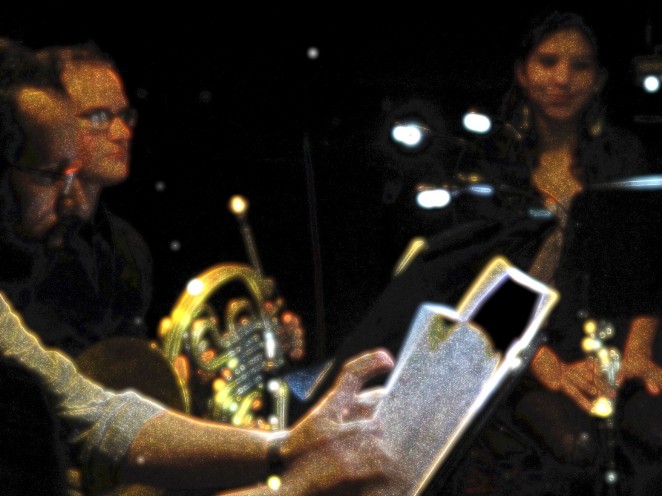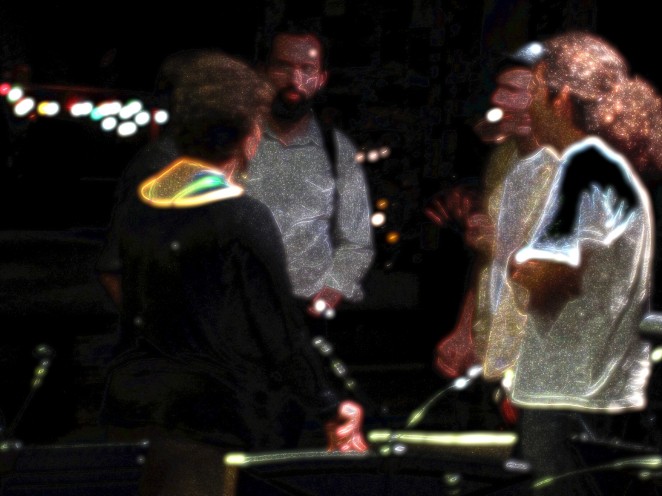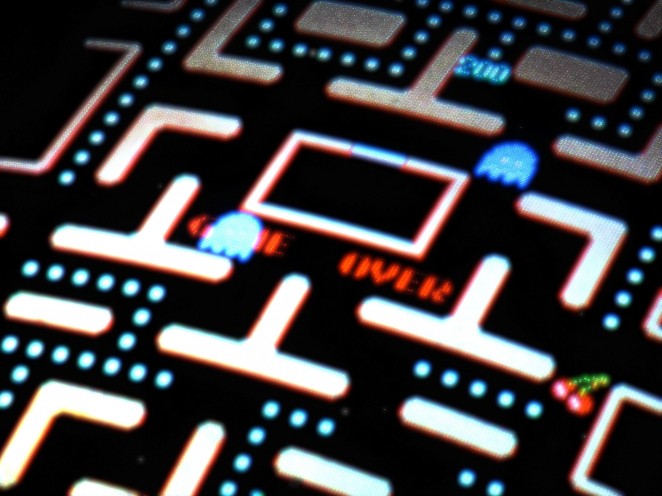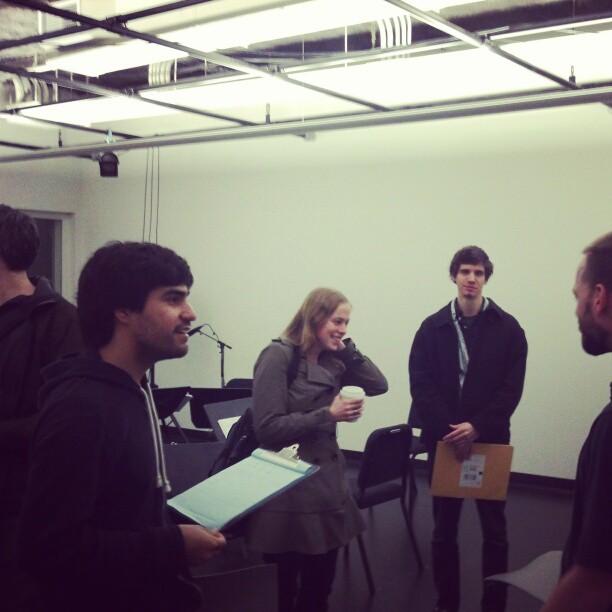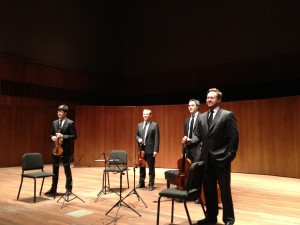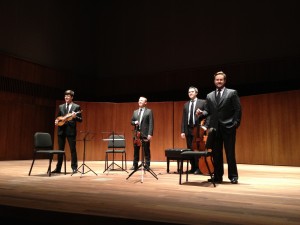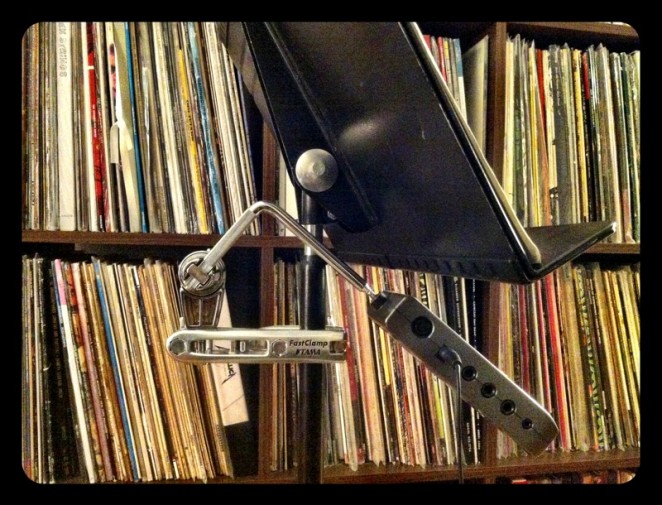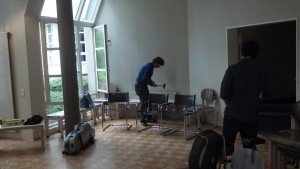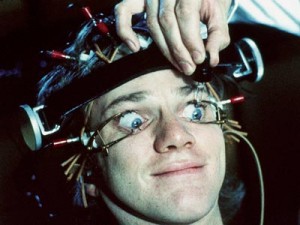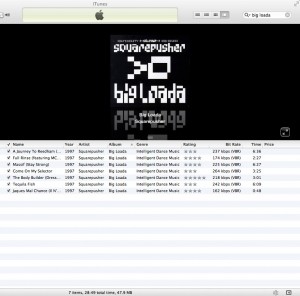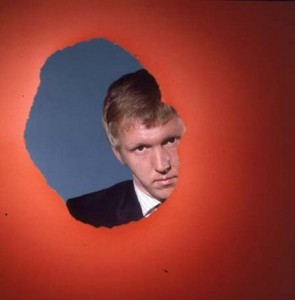Maiden Voyage to Milwaukee
This weekend marked out first trip to Milwaukee for a concert at the Unruly Music Festival. We had a fantastic day, beginning with a workshop with students and ending with a concert at the Marcus Center's Vogel Hall.
Friday, the day before the trip. We rehearsed from nine in the morning 'til four in the afternoon, and just before we left we discussed the last details of our travels the next day.
Saturday morning, after reading sketches by University of Wisconsin at Milwaukee (our hosts) for works they'll complete for the spring edition of the festival.
Alterra Coffee for lunch! We got a little excited.
Arrival in the Marcus Center.
Diving into the ritual of setting up for tech rehearsal of Black Angels.
It's almost showtime...
We're outta here! What's Aurelien looking at?
It's a reveler too drunk to stay on his bike! Luckily the police are here to help him.
Launching the Logan Center
We're incredibly excited, thrilled, pumped up and stoked to be playing one of the first concerts in the amazing new Reva and David Logan Center for the Arts at the University of Chicago. If you're reading this blog, you probably know that we were recently named Ensemble in Residence at U. of C., so it feels particularly fitting to be launching our brand-spanking-new residency with a performance in a brand new venue. There's an entire festival of events this weekend, and we hope we'll see you in the Performance Hall for our show on Friday.
But, this building is way more than just a new concert hall. This is a ten story building with a unique "Performance Loft" on the 9th floor with this view (clicking photos makes 'em get big!):
It's an architectural wonder with many amazing corridors and open spaces:
It asserts itself in the Hyde Park landscape boldly:
And, it has space for a full range of artistic activities. But, that's not why you're here. We're so excited about the new concert hall in this building. We had the chance to try it out last spring (before it was fully completed) when the team from Kirkegaard Associates was in town to see how their work was sounding. Here we are, getting used to a stage we hope to take many times:
An Exciting Announcement
Hey all!
We are excited to announce that the University of Chicago's Department of Music has appointed us "Ensemble-in-Residence" beginning this fall! We will be performing in concerts, giving workshops, coaching chamber music, and collaborating with the vaunted composition department all year long. Read our full press release below, and we hope to see you in Hyde Park some time this season.
All best,
Aurelien, Austin, Doyle and Russ
[divider_line]
For immediate release:
The Spektral Quartet is thrilled to announce its new post as Ensemble-In-Residence at the University of Chicago's Department of Music beginning in the 2012/2013 academic year. Having served as orchestral, chamber and private lesson coaches for the University's string students during 2011/2012, the Chicago-based group will become Hyde Park regulars in both pedagogical and performance capacities through this formalized position.
Champions of new music, and specifically Chicago composers, Spektral will be working closely with the University’s composition faculty and students through its participation in the New Music Ensemble. The University Chamber and Symphony Orchestras will receive regular sectional coachings from the foursome, as will the student string chamber ensembles, who will be given professional guidance and rehearsal technique primers through Spektral's interactive workshops. Each academic quarter, the quartet will perform its signature new-cum-traditional concerts for the neighborhood's residents, faculty and students.
The Spektral Quartet inaugurates its new relationship with University of Chicago with a performance of works by Hugo Wolf, Joseph Haydn and George Crumb as part of the Logan Launch Festival, celebrating the opening of the brand-new Logan Center for the Arts and its acoustically excellent Performance Hall. The concert takes place on Friday, October 12, at 8:00pm at the Reva and David Logan Center for the Arts, 915 E. 60th Street. Admission is free.
Nice (W)rig(ley)
Nice (W)rig(ley)
Greetings from Deutschland
As many of you likely know, I also play violin for the contemporary music group Ensemble Dal Niente. Starting last weekend, and continuing through this week, I am in Darmstadt, Germany with the ensemble for the (in)famous Summer Course for New Music. You can expect more thoughts from me once I'm not in the midst of rehearsal on some of the most challenging music I've ever tackled - especially on the amazing chamber performances by the Arditti Quartet and Ensemble Recherche in works by Brian Ferneyhough.
For now, I hope you enjoy my photo-blog...since my phone is mostly useful as an mp3 player and camera here. Clicking a photo makes it bigger!
The opening concert of the festival, with Ensemble Modern playing Cage.
The amazing Arditti Quartet with Brian Ferneyhough after performing his String Quartet No. 6. More on this later.
A side-street in Darmstadt, that I discovered en-route to my and Jesse Langen's Shangri-La of espresso drinks.
Daniel Vezza plays the hero as well as the composer at Dal Niente's composer workshop by killing a Godzilla-sized spider.
Dal Niente's workshop concert got a bit crowded when extensive piano preparations moved us into a small chamber hall.
The view from my hotel room balcony. I'll see you and the quartet soon enough.
Shining the Artistic Spotlight on a Decade of War
By Guest Bloggers Arlene and Larry Dunn
 Well past the 10-year mark, we are engaged in the longest war in our nation’s history. We have spent at least $1.5 trillion dollars prosecuting war in Iraq and Afghanistan – much more if you count the full costs, such as the interest on the debt to borrow this money. Hundreds of thousands of soldiers have been deployed, many multiple times. Over 6,000 have died, and another 42,000 wounded. At least 132,000 Afghan and Iraqi civilians have died as well. And yet the large majority of American citizens are oblivious to the stark realities of these wars and only a very small percentage of us actually serves.
Well past the 10-year mark, we are engaged in the longest war in our nation’s history. We have spent at least $1.5 trillion dollars prosecuting war in Iraq and Afghanistan – much more if you count the full costs, such as the interest on the debt to borrow this money. Hundreds of thousands of soldiers have been deployed, many multiple times. Over 6,000 have died, and another 42,000 wounded. At least 132,000 Afghan and Iraqi civilians have died as well. And yet the large majority of American citizens are oblivious to the stark realities of these wars and only a very small percentage of us actually serves.
On May 23 and 24 in Chicago, Spektral Quartet, in collaboration with High Concept Laboratories, presented Theatre of War. This artistic effort to raise the level of discourse about our wars was scheduled just days after the NATO Summit, where our leaders negotiated our future military commitments in Afghanistan. All ticket proceeds from the event were donated to the Vet Art Project (www.vetartproject.com) to support their vital mission.
Theatre of War was a disquieting evening in which artists from a variety of genres brought forth elements of our nation's wars in Iraq and Afghanistan to an awestruck audience. Music, film, poetry, and drama were presented without breaks and with a request to the audience to hold their applause until the end. We were reminded of the nightly TV News reports during the War in Vietnam which brought the horrors of war into our living rooms every evening. That war affected everyone. Young men of all backgrounds were drafted. Everyone knew someone in uniform or waiting for a call from the local draft board.
For us, the knockout punch of the evening was the combination of Richard Mosse’s film "Killcam" and George Crumb’s Vietnam-era string quartet "Black Angels." “Killcam” juxtaposes two settings. Injured soldiers recuperating at Walter Reed Hospital are enthusiastically playing a video war game, with images that look eerily like combat locations in Iraq. Interspersed are scenes from actual Iraq war footage (via LiveLeaks). Men and vehicles are blown up by missiles delivered via remote control. The targeting crosshair images in these clips are nearly identical to the crosshairs in the video game being played at the hospital. But these are real people getting blown up by real explosives and really dying. Frightening enough just to look at, it is even more disturbing that these deaths were caused by antiseptic remote control.
Shortly after ”Killcam,” Spektral Quartet performed “Black Angels,” the original raison d’etre for Theatre of War. In this extraordinary piece for amplified string quartet, the musicians are challenged far beyond the standard bowing and plucking techniques. They used a panoply of accoutrements from thimbles, small bells, and glass rods, to tuned wine glasses of various sizes. At times they also chanted number sequences in several languages, in loud bursts or almost at a whisper. Crumb wrote this piece about the Vietnam War. The opening, THRENODY I: Night of the Electric Insects, was startling and terrifying, thrusting us into the jungle theater of that war. Quiet interludes were suddenly disrupted by shrieks of sound, like a surprise attack by guerrilla fighters. Death is ultimately portrayed in near silence; the stunned audience was held in it’s thrall. It is hard for us to imagine a more deeply committed performance of “Black Angels.”
The other most moving piece of the evening was “Blackbird,” a short story by Virginia Konchan, adapted for the stage by High Concept Laboratories Artistic Director Molly Feingold. Mitch Spalding, a soldier struggling with post-traumatic stress, is about to be redeployed. He finagles the Army for access to psychiatric counseling before he departs. But he finds no healing in it. Dustin Valenta, as Mitch, ably portrayed the anxiety plaguing soldiers overdosed on combat. He personified the human cost of serving in today’s military. Jeremy Clark, as the psychiatrist, maintained a cool, detached demeanor. He repeatedly stated “Good,” as Mitch reeled off examples of how bad things are, callously invalidating Mitch’s every emotion. ”Blackbird” powerfully illustrated the disconnect, not just between the soldiers and the general public, but also between those who serve and the people assigned to help them bear that burden.
The evening’s other components -- pianist Lisa Kaplan’s nerve-jangling performance of Drew Baker’s “Stress Position,” two additional Mosse films, and readings of poems by Wislawa Szymborska -- each contributed meaningfully to making Theatre of War a momentous achievement. We commend Spektral Quartet and their artistic partners for their boldness in holding these troubling realities up to the light for the audience to confront. So where does that leave us?
No matter where one stands on the rightness or wrongness of our continuing military actions, we are going about this in an irresponsible way that is not healthy for our society. We owe it to our “Mitches” that we fully understand what we are asking them to do in our names, whether they are shrugging into a kevlar suit for face-to-face combat in Afghanistan or sitting down at a remote control drone command center in a bunker in South Dakota. And we owe it to ourselves to demand from our elected officials that decisions about committing the lives of our soldiers and our treasury to war-making must be vigorously debated in the public square.
As to where we ourselves stand, we are deeply troubled. If we are going to war, we believe we should pay for it, and we do not mean by deluding ourselves that we can tax-cut our way to growth to cover the costs. We have to stop abusing our military families with endless deployments. We are driving them to despair. We hear people say: “They volunteered to serve; they knew what they were getting into.” That is simply unacceptable, self-delusional crap. We worry that the military actions we are taking are doing as much to prolong our problems with terrorism as they are to stop them. As we write this article, we are learning in the New York Times (http://www.nytimes.com/2012/05/29/world/obamas-leadership-in-war-on-al-qaeda.html?ref=opinion) that our President is directly involved in the decisions about who will get death-by-drone rained down upon them. On the one hand, we are heartened that at least he is taking personal responsibility. But we find the whole secret drone strike campaign legally dubious and morally suspect. And if nothing else, it is hard to imagine a more effective terrorist recruiting tool.
We are grateful to Spektral Quartet for helping our community to confront these difficult issues. We fervently hope this leads to more serious public discourse about our ongoing commitments.
Arlene and Larry Dunn are avid fans of a wide range of contemporary arts and music endeavors as well as life-long social activists. They are frequent contributors of “audience perspective” blog postings for ICE, the International Contemporary Ensemble. They live in rural LaPorte County, Indiana. Follow them on Twitter: @ICEfansArleneLD
Old Man and the Screen
On Thursday morning we performed at a private home for a man who is no longer able to leave the house for luxuries such as concerts. A director of over two hundred films, you've undoubtedly seen his name listed near the top of a set of end credits as they scroll up and out of sight. Lest you assume this was some display of vanity, summoning a quartet to his home, our outing was at the request of the family for a father/grandfather/husband nearing the end of his life. One whose love of music is profound. A director who during his career frequently insisted on hiring a film composer and orchestra for his projects' soundtracks. Let's call him The Director.
The Director is infirm, but there are no IV carts or humming machines inhibiting his movement or the subtle one-corner-of-the-mouth smile that appears when the incorrigible violist of said quartet makes a crack about how "This house is great, but it could really use a painting or two" (we played beneath a Miró not one but two Siquieroses). Sitting beneath a towering, 12' totem as the family and guests absconded for post-concert sandwiches, The Director guided my questions about his work toward discussions of the music within them. Then we agreed that Stephen Daldry's 2002 picture, The Hours, was only The Hours because of the architecture of the Phillip Glass score buoying it. A family friend rounded the couch to ask, without malice (or understanding), if our intention was to "Do this music full-time." The Director's knowing smile squelched any desire on my part for a snide retort. Had The Director and I been at some high-society soiree back in his more agile days, we would have snuck in a bottle of Pappy Van Winkle and one-upped each other on disparaging the collagen-jobs parading around the room.
The gratitude of The Director's wife and two adult children was heartfelt and earnest, and as we headed down the front steps, my thoughts began to coalesce: this Haydn and Brahms and Ravel could very well be the last bit of live Kammermusik The Director will experience. It's perhaps morbid to say, and yet the fact remains that this man misses concerts so deeply that his family was ultimately inspired to make the request. Music is vital to more than just musicians.
The only people likely to read this are the proverbial preached-to choir, but I'd venture to guess that this thought has surfaced, epiphany-like, for you as well at some singular moment. Hopefully, and likely, more than once.
Spektral has made every effort to create an event in Theatre of War that moves the dynamic of the concert as temporally-restricted art-moment to something with more tenacity. From the donation of ticket proceeds to the Vet Art Project to the post-concert interviews to the impact of each piece included on the program, it's all built to be like a handprint in hardening concrete. The kind of performance that moves beyond Holy-shit-how-do-they-play-in-
Thanks to The Director for reminding me that this is the kind of music I want to make.
Realistic Statistic
Unprohibited Prophylactic
You Want Loops With That Shake?
Star Power Part 3: Conclusion
The Old Man and the C: Decision Time (Part 2)
Old Man and the C: Star Power (Part 1)
This week marks the beginning of an arduous and vitally important process: The Rating of the iTunes Library. You might think that as a music reviewer/writer this may be a relatively simple process, but you would be very wrong. I’ve always found the star rating system reductive, minimizing hundreds or thousands of hours of artistic sweat down to a cartoonish, linear constellation. On the other hand, every time I return to the 16,382 tracks currently engorging my hard drive (I reduced the collection by 60-some-odd-percent recently), the experience feels a bit like setting foot in the Smithsonian for the first time. Where do I even start?
So against artistic instinct, King Diamond, John Fahey and William Primrose are all now sporting the equivalent of stickers on a kindergarten “Good Behavior” chart.
What does 4/5 stars mean, you ask? I’ve decided to use the Netflix model (loosely) as a launch point. Here’s my version:
1 star: Causes compulsion to lance eardrums with rusty, Civil War-era bayonets
2 stars: Inspires constant eye-rolling and as such, dangerous while operating a motor vehicle
3 stars: Goooood
4 stars: I don your band’s t-shirt
5 stars: Face. Melted.
Next week on Old Man and the C: Decision Time


